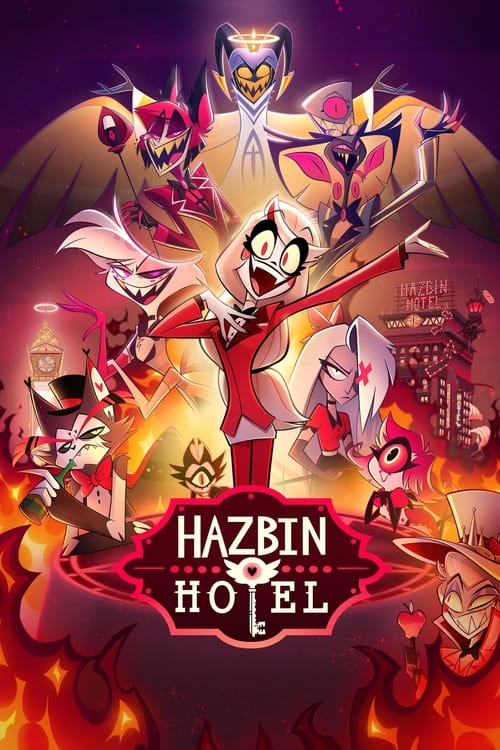
Ask Your Own Question
What is the plot?
In the opening scene of "Episode 3," the camera pans over a bustling Parisian street, where a young woman named Camille is seen hurriedly walking to her job at a local art gallery. As she enters the gallery, she is greeted by her boss, who is anxious about an upcoming exhibition. Camille, while trying to maintain her composure, feels the pressure mounting as she is tasked with organizing the event.
The narrative shifts to the police headquarters, where the Profiling Paris team is called in to investigate a series of art thefts that have been occurring in the city. The lead detective, who is known for his keen intuition, briefs the team on the latest theft, which involved a valuable painting stolen from a prestigious gallery. The team discusses potential suspects and motives, with each member contributing their insights based on their expertise.
Back at the gallery, Camille discovers that a piece of artwork has gone missing. She frantically searches the premises, her heart racing as she realizes the implications of the theft. Her boss confronts her, demanding to know what happened. Camille, feeling overwhelmed, insists that she had nothing to do with it and vows to help find the missing piece.
The Profiling Paris team begins their investigation by interviewing gallery staff and patrons. They learn about a mysterious figure who has been seen lurking around the gallery in the days leading up to the theft. The detectives split up to follow different leads, with one team member focusing on the art community while another investigates the black market for stolen art.
As the investigation unfolds, Camille receives a cryptic message on her phone, hinting that she may be in danger. She becomes increasingly paranoid, feeling as though she is being watched. In a tense moment, she confides in a close friend about her fears, revealing that she suspects someone within the gallery may be involved in the thefts.
The detectives make a breakthrough when they discover that the stolen painting is linked to a notorious art thief known for his elaborate heists. They set up a sting operation to catch him in the act, using Camille as bait due to her insider knowledge of the gallery. Camille reluctantly agrees, feeling a mix of fear and determination to clear her name.
On the night of the sting operation, the gallery is filled with guests for the exhibition. Tension builds as Camille plays her part, pretending to be unaware of the impending theft. The detectives are hidden throughout the gallery, watching closely. Just as the thief makes his move, the detectives spring into action, leading to a chaotic confrontation.
In the ensuing struggle, the thief attempts to escape with the painting, but the detectives manage to apprehend him after a tense chase through the gallery. Camille, shaken but relieved, watches as the thief is taken away in handcuffs. The team celebrates their success, but Camille is left with lingering doubts about the safety of her job and the trustworthiness of those around her.
The episode concludes with Camille reflecting on the events, feeling a mix of relief and anxiety. She realizes that the art world is fraught with danger, and as she looks at the remaining artwork in the gallery, she understands that her life may never be the same again. The camera fades out on her contemplative expression, leaving viewers with a sense of unresolved tension.
What is the ending?
In the ending of "Profiling Paris," Season 5, Episode 3, the team successfully solves the case of a murdered art dealer. They uncover the truth behind the crime, leading to the arrest of the perpetrator. The episode concludes with the team reflecting on their work and the emotional toll it takes on them, particularly on the lead investigator, who grapples with the darker aspects of human nature.
As the episode draws to a close, the scene shifts to the aftermath of the investigation. The team gathers in their office, the atmosphere heavy with the weight of their recent findings. The lead investigator, visibly exhausted, leans back in their chair, staring at the evidence board that now feels like a tapestry of human tragedy. Each photograph and note represents not just a clue, but a life affected by the crime.
In a quiet moment, the investigator reflects on the motivations behind the murder. They express a mix of relief and sorrow, acknowledging that while justice has been served, it comes at a cost. The emotional toll of the case lingers in the air, and the team members share their thoughts on the fragility of life and the darkness that can reside within people.
The camera pans to each character, capturing their expressions--some are contemplative, others are visibly shaken. The lead investigator's eyes betray a deep-seated empathy for the victim, a reminder of the humanity behind the statistics they often deal with. The team members exchange supportive glances, a silent acknowledgment of their shared burden.
As the episode concludes, the team members begin to disperse, each carrying the weight of the case with them. The lead investigator remains behind for a moment, looking out the window at the Paris skyline, contemplating the complexities of their work. The screen fades to black, leaving the audience with a sense of unresolved tension, a reminder that while they may have solved this case, many more await them, each with its own story and emotional fallout.
Is there a post-credit scene?
In "Profiling Paris," Season 5, Episode 3, there is no post-credit scene. The episode concludes without any additional content after the main storyline wraps up. The focus remains on the resolution of the case and the emotional arcs of the characters involved, leaving no further scenes or teasers for the audience to engage with after the credits roll.
How does the episode explore the theme of betrayal among the characters?
The episode delves into betrayal when it is revealed that one of the art dealers has been double-crossing his partners. This revelation not only complicates the investigation but also tests the trust among the team members as they navigate the murky waters of deception.
What significant clue does the team discover that changes the direction of the investigation?
The team discovers a hidden message in one of the stolen paintings that points to a secret meeting place for the art thieves. This clue shifts their focus and leads them to a critical confrontation.
How does the character of Captain Rocher contribute to the investigation in this episode?
Captain Rocher plays a crucial role in the investigation by leveraging her connections within the art community. Her knowledge of art history and her ability to navigate the complex relationships among art dealers help the team uncover vital clues.
What crime does the team investigate in Episode 3 of Season 5?
In Episode 3 of Season 5, the team investigates a series of murders that appear to be connected to a high-profile art theft. The investigation leads them into the world of art dealers and forgers.
What internal conflict does the character of Camille face in this episode?
In this episode, Camille grapples with her feelings of inadequacy as she tries to prove herself to her colleagues. She feels the pressure to contribute meaningfully to the case while dealing with her own insecurities about her skills as a profiler.
Is this family friendly?
"Profiling Paris," season 5, episode 3, contains themes and scenes that may not be suitable for all family members, particularly children or sensitive viewers. Here are some potentially objectionable or upsetting aspects:
-
Violence and Crime: The episode revolves around criminal investigations, which may include depictions of violence or discussions of violent acts that could be distressing.
-
Emotional Turmoil: Characters experience intense emotional states, including grief, anger, and fear, which may be unsettling for younger viewers.
-
Mature Themes: The narrative may touch on complex themes such as betrayal, loss, and moral ambiguity, which could be challenging for children to understand.
-
Tense Situations: There are moments of suspense and tension that could provoke anxiety or fear in sensitive viewers.
-
Dark Subject Matter: The exploration of criminal psychology and the darker aspects of human behavior may not be appropriate for all audiences.
These elements contribute to a tone that may be more suitable for older teens and adults rather than younger children.















